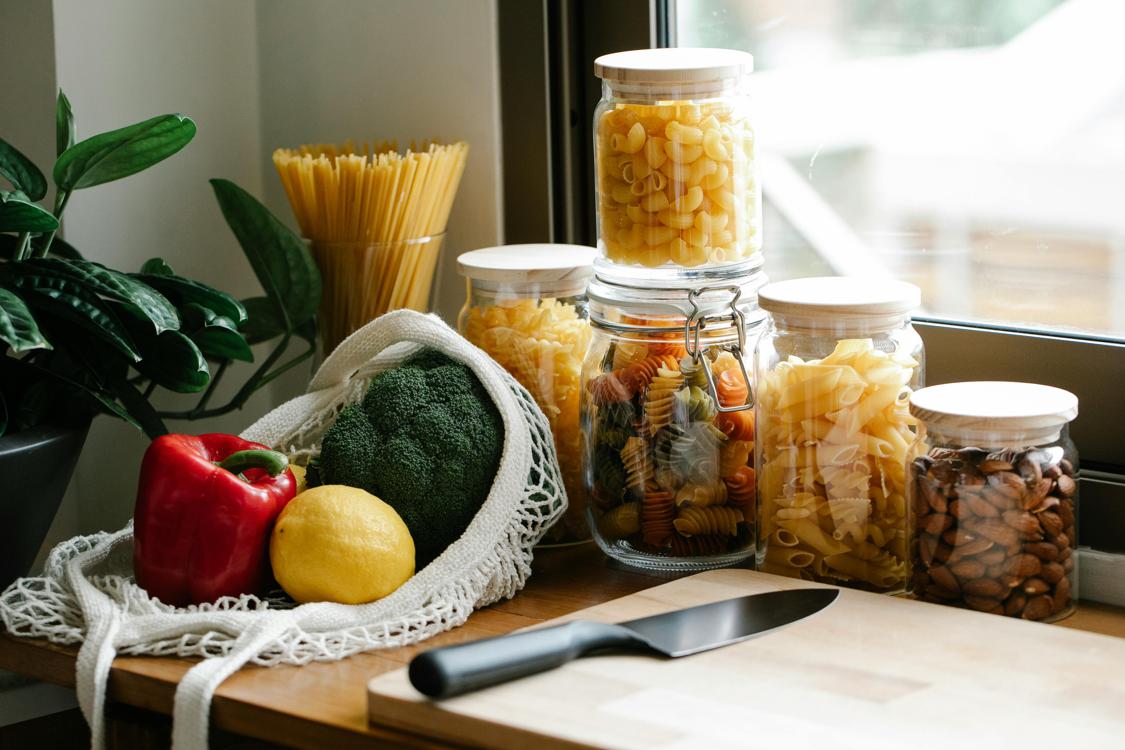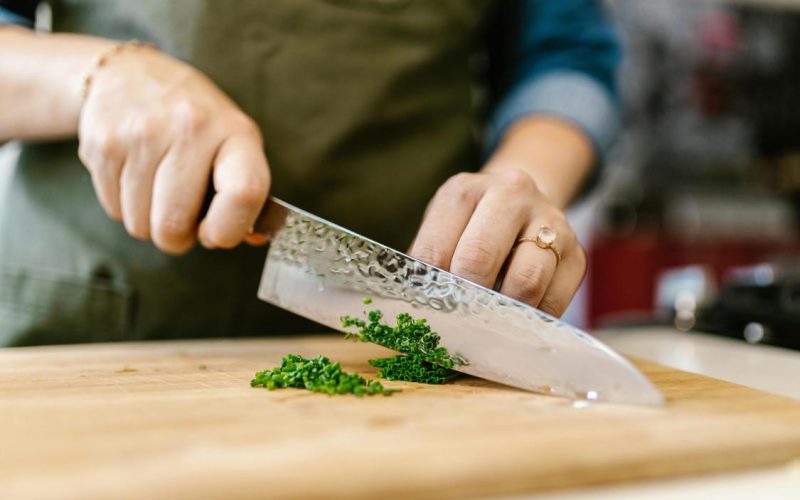A high-quality, well-maintained cutting board will last for years. But choosing the right one can be challenging:
You’ll have to decide between wood and plastic, for example, and then pick a size and a design. You’ll also want to consider details like juice grooves (a great feature if you chop juicy fruits and veggies or carve hot, roasted meat) and rubber feet for stability.
Material
Wooden cutting boards have a natural, warm look and are gentle on knives. They’re also less porous than other types of boards, meaning they’re more resistant to bacteria growth. Plus, they’re easy to clean and often dishwasher safe. However, they can be more prone to staining from strongly pigmented foods like beets and can absorb lingering odors, especially from onions. They’re also a little heavier and require more attention to maintenance, including regular conditioning with non toxic food-safe oil.
Plastic cutting boards are popular in commercial kitchens because they’re affordable, lightweight and versatile. Many are moisture and heat resistant, making them ideal for chopping meat or vegetables. Plastic is a safer option for some foodservice operators than wood because it’s less likely to harbor harmful bacteria. However, if a plastic board is made from an unsafe material or has been treated with harmful chemicals, it can leach those chemicals into your food.
When selecting a plastic cutting board, look for one that’s labeled as high-density polyethylene or polyvinyl acetate. These are the two most common types of plastic used in cutting boards. Look for one that’s rated as heat and moisture resistant, and make sure it’s dishwasher safe.
If you prefer to use a wooden cutting board, opt for a solid-color style that won’t show knife marks easily. You’ll want to choose a board that is a suitable size for your kitchen, taking into account both the countertop space you have and the quantity of food you typically prepare. A larger board may be a better choice for busy restaurants that need to cut large amounts of food in a short amount of time, while smaller boards are more appropriate for home cooks and personal use.
If you’re concerned about cross-contamination, choose a larger board with a deep groove to catch spills and liquid. Avoid boards with gimmicks like rubber feet, which offer additional stability but prevent you from flipping the board over for a complete cleaning and can limit airflow. Also, skip boards with a built-in handle, which can make the board harder to maneuver and can cause it to shift while you’re using it.
Size
The size of the board is a critical factor as it directly impacts its functionality. Large boards are ideal for preparing meals for a family or group and allow multiple ingredients to be cut at once. On the other hand, small boards are easy to handle and perfect for quick tasks such as slicing fruit or cheese. They also take up minimal storage space, making them suitable for compact kitchens or apartments.
The shape of the cutting board can also affect its functionality. For example, a specialty board with a juice groove can help you avoid messy cleanups by collecting liquid as it drains off foods like tomatoes or watermelon. Other shapes, such as a paddle or a “butcher block” style board, offer added stability and a dramatic look to your countertop. However, these heavier boards can be difficult to maneuver and add extra height to the counter. They can also be more challenging to clean and sanitize.
Another consideration is the thickness of the cutting board. While thicker boards may provide more durability, they can also increase the cost and weigh down the board. In addition, thicker boards tend to warp more easily. A good rule of thumb is to choose a cutting board that is no more than 2 inches thick.
In addition to the shape and thickness of the cutting board, the type of wood used should be considered. It is important to ensure that the board is made from a safe and sustainable source. This will help to protect your knives and the environment. The wood should be sourced from a tree that does not produce any toxic chemicals or sap, and it should not contain any pesticides or fungicides.
Finally, it is important to consider how you will store the cutting board. It is important to keep it out of direct sunlight and away from heat sources, as this will help prevent it from warping. You should also make sure that the board is easily accessible for cleaning and sanitizing. If possible, try to find a spot where the board can be hung vertically so that it is easier to keep dry and clean.
Design

Like other kitchen tools, cutting boards aren’t just utilitarian—they can also be a source of pride, reflecting the tastes and craftsmanship of its owners. They can serve as the canvas for intricate carvings, detailed patterns and aesthetic craft that harken back to ancient times or embody modern design principles.
A board’s material plays a huge role in its functionality, too. Its sturdiness, whether it’s made from wood or another material, influences how long it lasts and if it can be sanitized properly to keep your food safe. Wooden boards, for example, can be easier on knives than plastic and are less prone to warping—especially if you choose a dense hardwood, such as maple or cherry.
The grain alignment of the board’s surface also matters. Boards with a grain that runs horizontally can warp more easily than those with a vertical grain, especially in humid environments. Board manufacturers minimize this issue by using strips of wood with the grain angled in opposite directions, which counteracts a tendency for the board to warp one way or the other.
Rubber and plastic cutting boards are a popular alternative to wooden ones, particularly for those who want to protect their knife blades. They’re generally affordable, easy to clean and very durable, though they can be hard on knife edges and mar if not cared for properly. They’re also usually not dishwasher-safe, so it’s important to scrub them with hot soapy water immediately after every use.
Wooden boards, on the other hand, are often not only more beautiful than plastic, but they’re also sturdier and offer a more natural cutting surface that’s easy on knives. They may not be as impervious to warping and tend to have a more rustic charm, but they are extremely versatile.
Many cutting boards are adorned with extra features, such as juice grooves that catch liquid runoff or nonslip bases. But these gimmicks don’t always add value to the board, and can even compromise its stability or ease of cleaning. Integrated bowls or compartments are a newer feature that can help chefs to segregate chopped ingredients, making the mise-en-place process faster and more efficient.
Functionality
When picking a new cutting board, it’s essential to consider how often you will use it and whether the surface is hygienic. Ideally, your kitchen should have multiple boards to choose from and you’ll want to have separate ones for raw meats, vegetables, and fruits so that bacteria is not spread. The type of material your board is made out of is also important as some types are easier to clean and sanitize than others.
The best cutting boards, like a Raikou Hinoki Cypress Cutting Board, are sturdy enough to support your chef’s knife, and they should be easy to clean. Most experts recommend that you select a board that can be easily wiped down with soapy water, as this is the most effective way to sanitize your board. You should also look for a board with grooves that close up after each wash, as these will help to prevent the buildup of germs between washes. Additionally, make sure to avoid soaking your board as this can cause wood to warp or split.
If you are interested in purchasing a more durable board, one of the best options is to choose one made from solid hardwood. These boards are harder than traditional plastic or bamboo and can offer more durability against knife impacts. Additionally, these wood boards are hygienic as they do not contain any chemicals or resins that could leach into your food.
It is also a good idea to invest in a cutting board that can be oiled or waxed on a regular basis to keep it looking brand-new and to protect the surface from damage. A well-cared for cutting board can last for many years and be used over and over again.
Finally, you should consider the size of your board and how it fits into the space that you have for storage. A larger board may require more counter or cabinet space to store, so this is something to think about before you make a purchase. Additionally, a larger board will be heavier than smaller ones, which may affect how it feels when in use.

